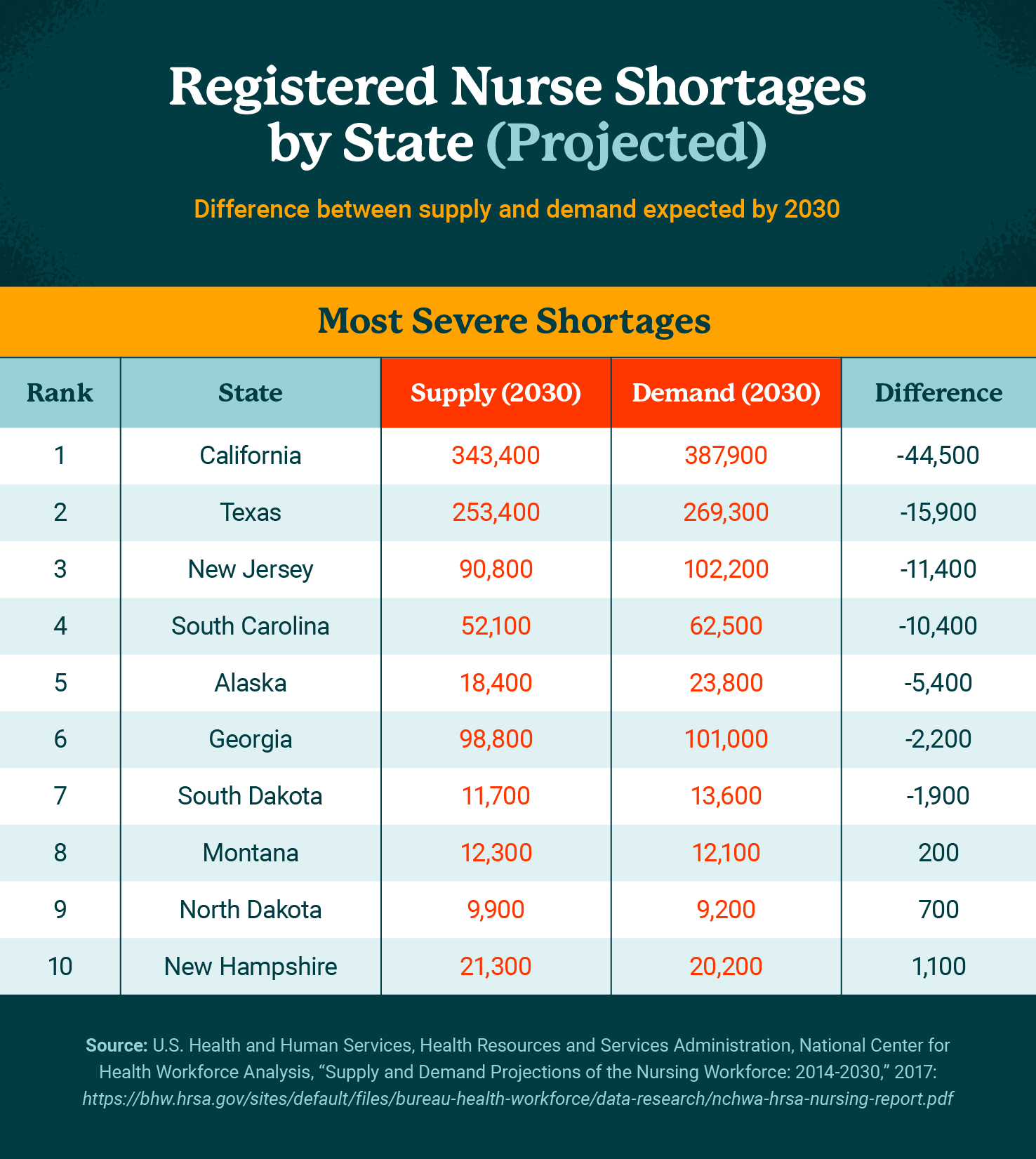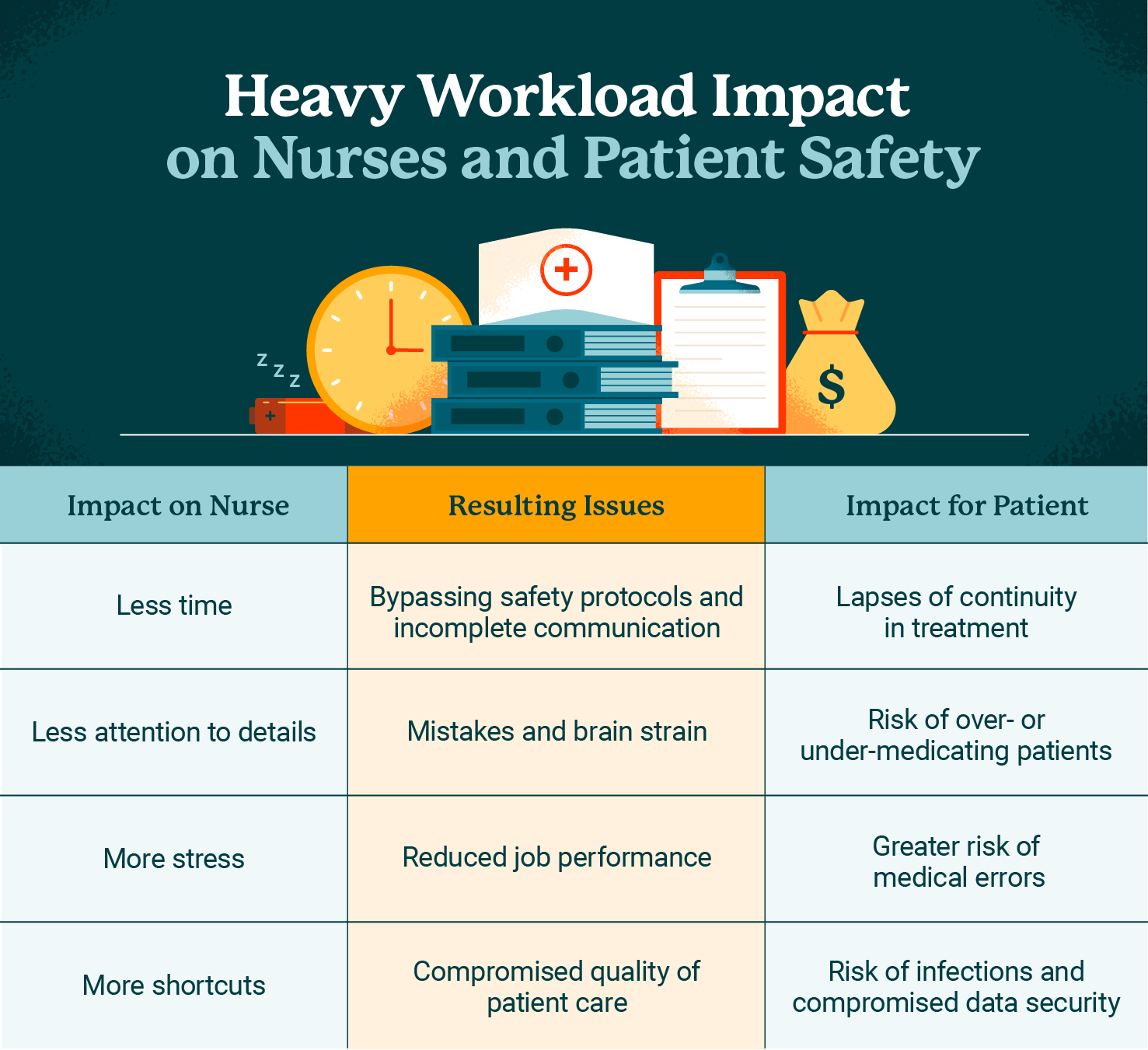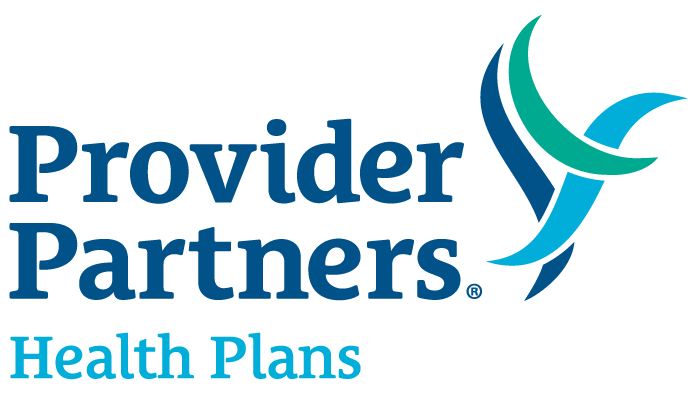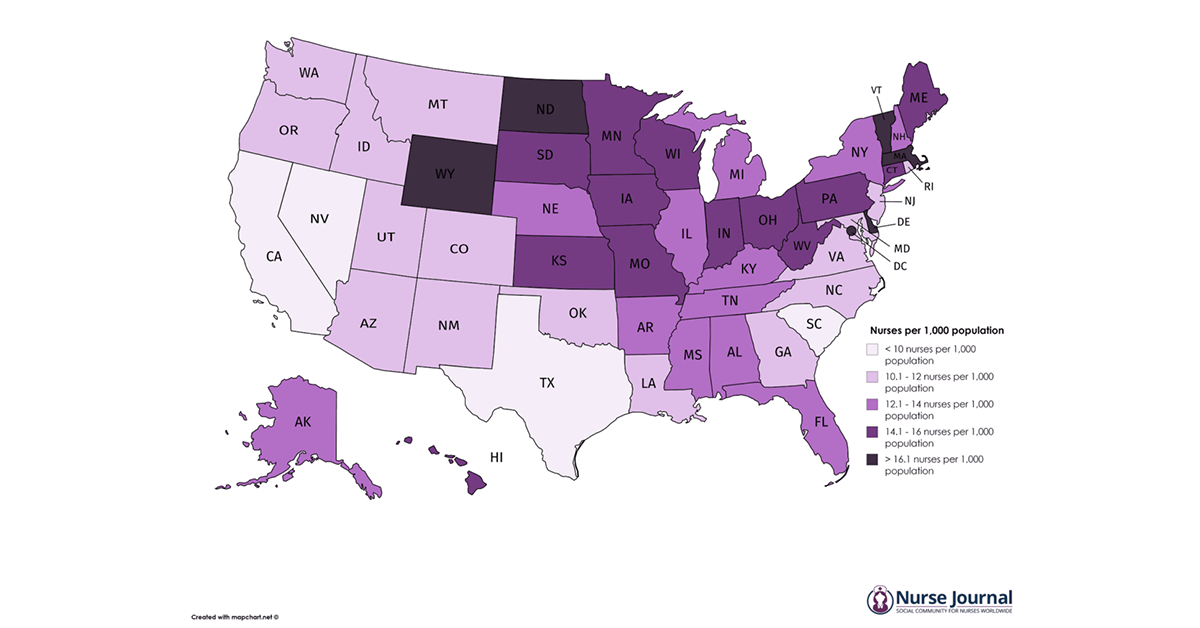Value Based Payment (VBP) is a concept by which purchasers of health care (government, employers,…

The 2021 American Nursing Shortage: A Data Study
The United States is in the midst of a critical nursing shortage that is expected to continue through 2030.1 In this post, we examine how this complex issue came about, what the statistics reveal, and what strategies nurses can use to move through the challenges it brings.
The Growing Nursing Shortage
“Nursing is what I was called to at a very young age, and I cannot imagine doing anything else— but I am very tired.”
—Heather Josey Thomas, MSN-Ed, RN, CCRN, DNP student at USAHS
The bravery and dedication of America’s nurses have been displayed in front-page newspaper stories across the country throughout the COVID-19 pandemic. However, the pandemic has also been a huge strain on nurses and the healthcare system, due in part to limited staff and resources. The nursing shortage facing America began long before the pandemic propelled it into the headlines once again.
The United States has experienced nursing shortages periodically since the early 1900s. Multiple factors led to each shortage, from world wars to economic recessions. But the magnitude of the current nursing shortage, announced in 2012, is greater than ever before in this country.2
Given the growing demand for healthcare services across a multitude of specialties, reports project that 1.2 million new registered nurses (RNs) will be needed by 2030 to address the current shortage.3 Nursing schools and graduate nursing programs are working to accommodate the rising demand for skilled nurses and nurse leaders, but they also face challenges.
Nursing Shortage Statistics
To create a visualization of the American nursing shortage, we compared each state’s population to the most recent statistics on the employment of RNs in that state to calculate the number of working RNs currently available per 1,000 residents.
How does your state rank?
RNs per 1000 population
- Fewer than 10
- 10.1 – 12
- 12.1 – 14
- 14.1 – 16
- 16.1 or more
Select a stateAlabamaAlaskaArizonaArkansasCaliforniaColoradoConnecticutDelawareFloridaGeorgiaHawaiiIdahoIllinoisIndianaIowaKansasKentuckyLouisianaMaineMarylandMassachusettsMichiganMinnesotaMississippiMissouriMontanaNebraskaNevadaNew HampshireNew JerseyNew MexicoNew YorkNorth CarolinaNorth DakotaOhioOklahomaOregonPennsylvaniaRhode IslandSouth CarolinaSouth DakotaTennesseeTexasUtahVermontVirginiaWashingtonWest VirginiaWisconsinWyoming
Why Is There a Nursing Shortage?
High demand and low supply have created the current nursing shortage, and a multitude of factors have led us to this point.

Demand Is on the Rise
As of February 2021, registered nursing was the fifth-most in-demand job in the American workforce, according to LinkedIn.4 Healthcare facilities are searching for skilled RNs because they are facing increased patient demand for care.
The country has a larger population over the age of 65 than ever before in its history, composed primarily of baby boomers (those born between 1946 and 1964). This 65+ demographic has grown rapidly, jumping from 41 million people in 2011 to 71 million in 2019—a whopping 73% increase.5 And the U.S. Census Bureau projected that number to continue to rise, estimating it will reach 73 million by 2030.6
With better and more accessible healthcare, the growing population of seniors requires more health services due to age-related conditions. Lengthened lifespans stretch out the timeframe when patients require services, thus adding pressure to an already strained healthcare system.
The Retirement Drain
“When COVID hit, many people retired or were given an early retirement package… Now they are so understaffed that they are paying bonuses for people not to call out or use their vacation for the next three months.”
—Beverly Banez, BSN, RN, MSN student at USAHS
The population surge from the baby boomer generation has led not only to a greater number of aging patients but also means that a large portion of the nursing workforce is heading toward retirement. Between 2000 and 2018, the average age of employed registered nurses increased from 42.7 to 47.9 years old. And nearly half (47.5%) of all RNs are now over the age of 50.7
A 2015 study predicted that over one million RNs will retire from the workforce between now and 2030.8 As they go, they take with them their invaluable amount of accumulated knowledge and nursing experience.
It’s important to note that COVID-19 created a wave of artificial early retirements due to the extended period of limited access for both patients and staff to medical facilities. Because hospitals stopped doing elective surgeries and patients stayed away from the hospital, hospitals had less income and needed to reduce staff to stay afloat. In response, many hospitals forced furloughs on their employees, leading some people to opt to retire who wouldn’t have planned to otherwise.9
The Location Factor
When reviewing nursing shortage data at the state and national level, the numbers can be confusing. The Bureau of Health Workforce projects that California will face the largest nursing shortage of any state, with a projected shortfall of 44,500 nurses by 2030. In contrast, the state of Florida will have a projected surplus of more than 53,000 RNs by 2030. Looking only at states better off can lead one to falsely assume that the problem has blown over or never even existed.10
Rural communities absorb greater impacts of the nursing shortage than do metropolitan areas. Only 16 percent of RNs live in rural areas, where they serve over 52 million Americans who reside there.11
The Educator Exodus
Nurses need to be taught by other nurses. As the average age of the RN population has increased, so has the age of RNs who have stepped into the role of educator. They, too, are looking toward retirement, leaving nursing schools without a strong pipeline of teachers to take their place.
One recent report discovered that, in 2020, over 80,000 qualified nursing school applicants were turned away from baccalaureate and graduate programs due to a lack of qualified faculty, clinical study sites, classroom space, and budget constraints.12 As a result of the ongoing decrease in faculty numbers, fewer nursing graduates will be joining the workforce.
Stress of the Job
The heightened stress levels of today’s nurses are due to more than just the pandemic, more than just the need to make urgent life-altering decisions, and more than just working long hours. It is all of these things and more, combined, that weigh on the shoulders of many RNs.
Ongoing budget tightening has led many healthcare facilities to cut staffing levels, leaving a major imbalance in the workloads for remaining nursing staff. This has been especially true during the pandemic. Many hospital employees were asked to move from their usual departments and roles to assist with the intensive care of COVID-19 patients.13 Most nurses are dedicated to helping patients however they can; however, it’s stressful to be thrown into a new area of nursing on short notice—especially an area as demanding as critical care.
The Impact of the Nursing Shortage

The shortage of skilled nurses entering and staying in the workforce affects both patient care and other healthcare workers on the team. Nurses are so important to healthcare delivery that any challenge they face impacts us all.
Higher Risk of Nurse Burnout
“I have missed kids’ school events, I have been short-tempered when I shouldn’t have been, and I have compromised my own health at times due to my inability to say ‘no’ to the extra shifts even on days when I knew I should.”
—Heather Josey Thomas
Overwhelmed frontline-working RNs have been running a constant risk of developing nurse burnout. The phrase struggles to encompass the depth of the physical and emotional exhaustion nurses experience as the result of heavy workloads, long hours, and the stress of treating critically ill patients.
Pandemic or not, having fewer nurses available to spread the workload is guaranteed to add layers of stress onto other staff. The weight of life-altering decisions needing to be made on a constant basis and the knowledge that there is never enough time to provide your patients can undermine staff efficacy and exacerbate personnel shortages.
Higher Risk of Medication Errors and Deaths
A 2019 study revealed that a patient’s risk of post-care-associated infection increased by 15% in facilities with low hospital staffing levels.14 Another study conducted in California correlated an 8.9% decrease in pneumonia infections among surgical patients to an increase of one additional work hour per patient per RN.15
Longer Wait Times and Shorter Visits
The fewer staff members available at a given facility due to the nursing shortage, the longer patients must wait to be seen by the staff on site. And with more and more patients coming for medical assessments and treatments due to the aging U.S. population, extensive wait times and brief visits with the nurse and doctor become more and more typical.
Solutions for the Nursing Shortage
For such a complex problem, there is no simple solution. But there are strategies and practices that we can examine and put into play today. Advances in nursing education, in the workplace, and at the policy level may spark the change we need.
Greater Access to Education
“I hope that more people choose nursing as a career and that I can continue to be involved in teaching and growing them. After all, they will be the ones caring for me and my family someday!”
—Heather Josey Thomas
Education is the bedrock for growing the population of skilled nurses. Creating programs that incentivize students to enroll in nursing school, complete their studies, and continue their education to up-level their skills and careers is one strategy for increasing enrollments. Registered nurses with a Bachelor of Science in Nursing (BSN) degree typically have stronger job prospects than nurses without the degree.
Naturally, encouraging nurses to earn their graduate-level credentials, such as a Master of Science in Nursing (MSN) or a Doctor of Nursing Practice (DNP) degree, will add to the pool of highly skilled nurses and improve patient outcomes. Nurses with graduate degrees can serve in leadership roles, in advanced levels of patient care, or as educators themselves.
Flexible options for schooling, such as online programs, are critical to recruiting and retaining engaged students—especially working nurses who need to fit school into their busy schedules.
Strategic Workplace Accommodations and Flexibility
“The hospital where I work part-time as a direct-care ICU nurse hired many travelers and/or agency staff. They also offered a huge COVID differential, essentially doubling everyone’s hourly salary, but eventually, even that couldn’t entice people to come in to work extra shifts because we were just so tired.”
—Heather Josey Thomas
Nurse executives are responsible for creating a workplace culture that supports nursing staff and entices experienced nurses to remain on staff. For example, beyond simply improving compensation and benefits packages, executives can empower nurses to create their own schedules and reward senior nursing staff for mentoring new nurses; programs like this can have a major impact on employee retention at a time when it’s needed most.
As modern technology continues to shape healthcare delivery, the flexibility of telehealth and travel nursing creates new paths for some nurses to continue doing their good work in creative ways. Increased opportunities for career development and growth in nursing will help maintain nursing as an attractive, desirable job opportunity.
Lobbying and Advocacy
Everyone who benefits from the skilled hands and minds of RNs across the country should be encouraged to advocate during the policymaking process at both the state and federal levels. For example, the American Nursing Association (ANA) currently works with legislators on a variety of key topics, such as workplace health and safety, appropriate staffing, and reducing gun violence. The ANA even provides an RN Activist Toolkit to help get you started.16
Opportunities Created by the Nursing Shortage
“The nursing shortage gave me a chance to work in another department for better hours and for a new experience.”
—Beverly Banez
Thankfully, the current nursing shortage has a positive side: opportunities for career growth. The healthcare industry is considered to be recession-proof, which translates to potential long-term job security.
- According to U.S. News & World Report’s list of the 100 Best Jobs in America for 2021, nurse practitioner takes third place as an optimal career path. In fact, 13 of the top 20 Best Jobs are in the healthcare field, including speech-language pathologist (#7) and occupational therapist (#19).17
- Opportunities for nurse educators abound. A report from the American Association of Colleges of Nursing in 2018 found that 56% of the educational institutions they surveyed had full-time vacant teaching positions open.18
No healthcare system can function without skilled nurses. Nursing shortages are being documented around the globe, with a recent report from the World Health Organization noting that the world may be short 5.7 million nurses by 2030.19 The United States’ experience with the pandemic has placed the reality of our current nursing shortage into the spotlight. With a better understanding of what challenges the shortage brings, how we can improve the situation, and how nurses can take advantage of the opportunities it brings, we can hope to shift the tide.
The University of St. Augustine for Health Sciences (USAHS) offers a Master of Science in Nursing (MSN) program, a Doctor of Nursing Practice (DNP) program, and Post-Graduate Nursing Certificates designed for working nurses. Our degrees are offered online, with optional on-campus immersions.* Role specialties include Family Nurse Practitioner (FNP), Nurse Educator,** and Nurse Executive. The MSN has several options to accelerate your time to degree completion. Earn your advanced nursing degree while keeping your work and life in balance.
*The FNP role specialty includes two required hands-on clinical intensives as part of the curriculum.
**The Nurse Educator role specialty is not available for the DNP program.
- Edward Mehdaova, “Strategies to Overcome the Nursing Shortage,” Walden University, 2017: https://scholarworks.waldenu.edu/cgi/viewcontent.cgi?article=5933&context=dissertations [↩]
- Linda Workman, “Confronting the Nursing Shortage,” Nurse Key: https://nursekey.com/confronting-the-nursing-shortage/ [↩]
- Terri Williams, “1.2 Million More Nurses Needed by 2030 to Meet U.S. Demand,” Good Call: https://www.goodcall.com/news/1-2-million-more-nurses-needed-by-2030-to-meet-u-s-demand-09308/ [↩]
- Mike Irvine, LinkedIn Talent Blog, “The Most In-Demand Jobs Right Now,” March 15, 2021: https://business.linkedin.com/talent-solutions/blog/trends-and-research/2020/most-in-demand-jobs [↩]
- Lisa Haddad et al., “Nursing Shortage,” StatPearls Publishing, Dec. 14, 2020: https://www.ncbi.nlm.nih.gov/books/NBK493175/ [↩]
- U.S. Census Bureau, Population Division, “Projected Age Groups and Sex Composition of the Population: Projections for the United States, 2017–2060,” U.S. Census Bureau, Population Division, Sept. 2018: https://www2.census.gov/programs-surveys/popproj/tables/2017/2017-summary-tables/np2017-t2.xlsx [↩]
- U.S. Health and Human Services, Health Resources and Services Administration, National Center for Health Workforce Analysis, “Brief Summary of Results from the 2018 National Sample Survey of Registered Nurses,” 2019: https://data.hrsa.gov/DataDownload/NSSRN/GeneralPUF18/nssrn-summary-report.pdf [↩]
- David Auerbach et al., “Will the RN Workforce Weather the Retirement of the Baby Boomers?” Medical Care, Oct. 2015: https://journals.lww.com/lww-medicalcare/Abstract/2015/10000/Will_the_RN_Workforce_Weather_the_Retirement_of.3.aspx [↩]
- Alia Paavola, “266 hospitals furloughing workers in response to COVID-19,” Becker’s Hospital Review, Aug. 31, 2020: https://www.beckershospitalreview.com/finance/49-hospitals-furloughing-workers-in-response-to-covid-19.html [↩]
- U.S. Health and Human Services, Health Resources and Services Administration, National Center for Health Workforce Analysis, “Supply and Demand Projections of the Nursing Workforce: 2014-2030,” 2017: https://bhw.hrsa.gov/sites/default/files/bureau-health-workforce/data-research/nchwa-hrsa-nursing-report.pdf [↩]
- Health Resources and Services Administration, National Center for Health Workforce Analysis, “The U.S. Nursing Workforce: Trends in Supply and Education,” April 2013: https://www.ruralhealthinfo.org/assets/1206-4974/nursing-workforce-nchwa-report-april-2013.pdf [↩]
- American Association of Colleges of Nursing, “Student Enrollment Surged in U.S. Schools of Nursing in 2020 Despite Challenges Presented by the Pandemic,” April 1, 2021: https://www.aacnnursing.org/News-Information/Press-Releases/View/ArticleId/24802/2020-survey-data-student-enrollment [↩]
- Nancy Cleeland, “Hospitals Face Staffing Shortages, Reduced Budgets in Coronavirus Pandemic,” SHRM, April 7, 2020: https://www.shrm.org/resourcesandtools/hr-topics/employee-relations/pages/hospitals-face-staffing-shortages-reduced-budgets-in-coronavirus-pandemic.aspx [↩]
- Jingjing Shang et al., “Nurse Staffing and Healthcare-Associated Infection Unit-Level Analysis,” The Journal of Nursing Administration, May 2019: https://pubmed.ncbi.nlm.nih.gov/31008835/ [↩]
- Pascale Carayon and Ayse Gurses, “Chapter 30: Nursing Workload and Patient Safety—A Human Factors Engineering Perspective,” Patient Safety and Quality: An Evidence-Based Handbook for Nurses: https://www.ncbi.nlm.nih.gov/books/NBK2657/ [↩]
- American Nursing Association, “Federal Issues”: https://www.nursingworld.org/practice-policy/advocacy/federal/ [↩]
- U.S. News & World Report, “100 Best Jobs,” 2021: https://money.usnews.com/careers/best-jobs/rankings/the-100-best-jobs [↩]
- American Association of Colleges of Nursing, “Special Survey on Vacant Faculty Positions for Academic Year 2018-2019,” 2018: https://www.aacnnursing.org/Portals/42/News/Surveys-Data/Vacancy18.pdf [↩]
- Mackenzie Bean, “World may be short 5.7M nurses by 2030: 4 report takeaways,” Becker’s Hospital Review, April 9, 2020: https://www.beckershospitalreview.com/nursing/world-may-be-short-5-7m-nurses-by-2030-4-report-takeaways.html [↩]
Original Soruce: https://www.usa.edu/blog/nursing-shortage/



